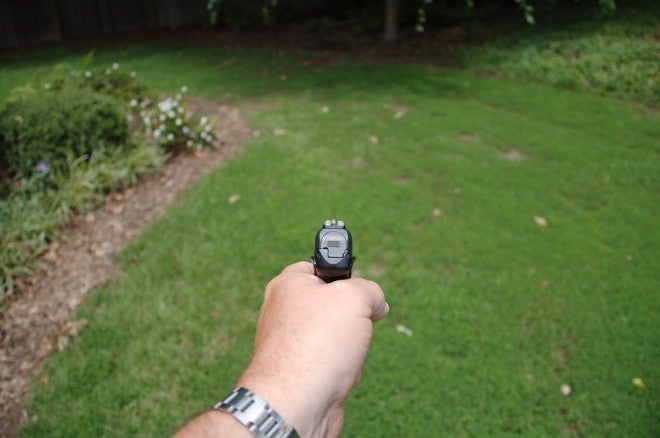

Level II is a failure to eject, such as a stovepipe.(For example, a misfire is a Level I malfunction.) Level I malfunctions are the easiest to clear.You also will see malfunctions labeled Level I, Level II, and Level III: Another shooter problem is when you do not have a firm grasp on your gun this is called “limp-wristing” and may cause any of the previously discussed problems. This was my problem as a noob and caused persistent issues with getting a round to chamber, known as failure to feed. Being too gentle when you rack the slide.There are two common shooter issues that may also cause a malfunction: If you get a failure to feed, eject the magazine and clear out your chamber before reloading. Once both rounds are ejected, insert a fresh magazine. Then, rack the slide to eject both rounds. To fix a double feed, first, remove the magazine. You have a double feed when two live rounds attempt to feed into the chamber. This is perhaps the most dangerous malfunction and the reason a round should only be chambered when the gun’s muzzle is pointed in a safe direction with a solid backstop. SlamfireĪ slamfire is when a new round loads into the chamber and the bolt return causes the firing pin to hit the primer hard enough to cause the round to fire without the trigger being engaged. After that - with the gun pointed in a safe direction - rack the slide to eject the malfunctioning round. Keep your gun pointed in a safe direction for at least 30 seconds to see if the round goes off. HangfireĪ hangfire is a delay between the time the firing pin hits the bullet’s primer and the round going off. The experts at Magpul teach students to swipe at the stuck round with your hand to remove it. That will allow gravity to aid in removing the case. To fix a failure to eject, use tap-rack-bang! But first, roll your gun 90 degrees to the right. This is when the case gets stuck standing up, preventing the slide from returning to battery. Failure to Eject/StovepipeĪ failure to eject, sometimes called a stovepipe, means the case did not come out of the chamber after the gun fires. After checking to see if your magazines are in good working order, your next step would be to switch ammo. In my experience, a little lubrication on the feed lips of the magazine and in the chamber fixes this issue.

It is also possible that the magazine was not inserted properly. A round that fails to feed is normally associated with a magazine problem - the spring needs cleaning, or possibly, it is a bad follower. Failure to FeedĪ failure to feed is when a cartridge will not load into the chamber. If you get a squib load, you may be able the push the bullet out of the barrel with a cleaning rod. However, if you are unsure, take your gun to a gunsmith or call the range officer to remove the bullet. You may be able to remove the bullet with a barrel cleaning rod. Squibs occur most commonly with hand loads, but factory ammunition can produce one as well.Ĭlearing a squib with tap-rack-bang! is not possible. Clear the action, make your gun safe and check the barrel. If you suspect you have a squib, stop shooting. If you do not notice a squib, you might be able to load and fire another round.īut that can really damage your gun. A squib will only go Pop!, opposed to Bang!, and most likely will feel less recoil than normal. It is important that you are aware of what happens after you pull the trigger. A squib can be a danger to you and your firearm. Therefore, the bullet gets stuck in the barrel. Here are the different types of gun malfunctions and what to do about them: Squib LoadĪ squib is a round that does not have enough powder charge to send the bullet down the chamber and out the barrel. Malfunctions Due to Ammo or Gun Mechanics Rack - Rack the slide to clear the chamber and load a new round.Tap - Slam the bottom of the magazine with the palm of your hand to ensure it is seated properly.It's made better than the factory item and there is more tension on it as well (new spring comes with it). I also think that the new extractor helps quite a bit. Look to see if the rear lips are knocking the round off the bolt/extractor before the ejector does. (probably the firing pin as well for safety sakes) and try cycling some ammo by hand. What you might want to do is remove the recoil spring assy. FWIW, there is very little clearance between the ejector and rear magazine lips on my 22/45. It has a magazine release similar to the MKIIIs, so I would think the feed lip fix might work on the MKIIIs. Here is an interesting post I recently read in regards to this mod: I was just passing on the info that Bullseye (who is very knowledgeable on these pistols) had posted. I've never tried the magazine release fix myself as both my Rugers are MKIIs.


 0 kommentar(er)
0 kommentar(er)
